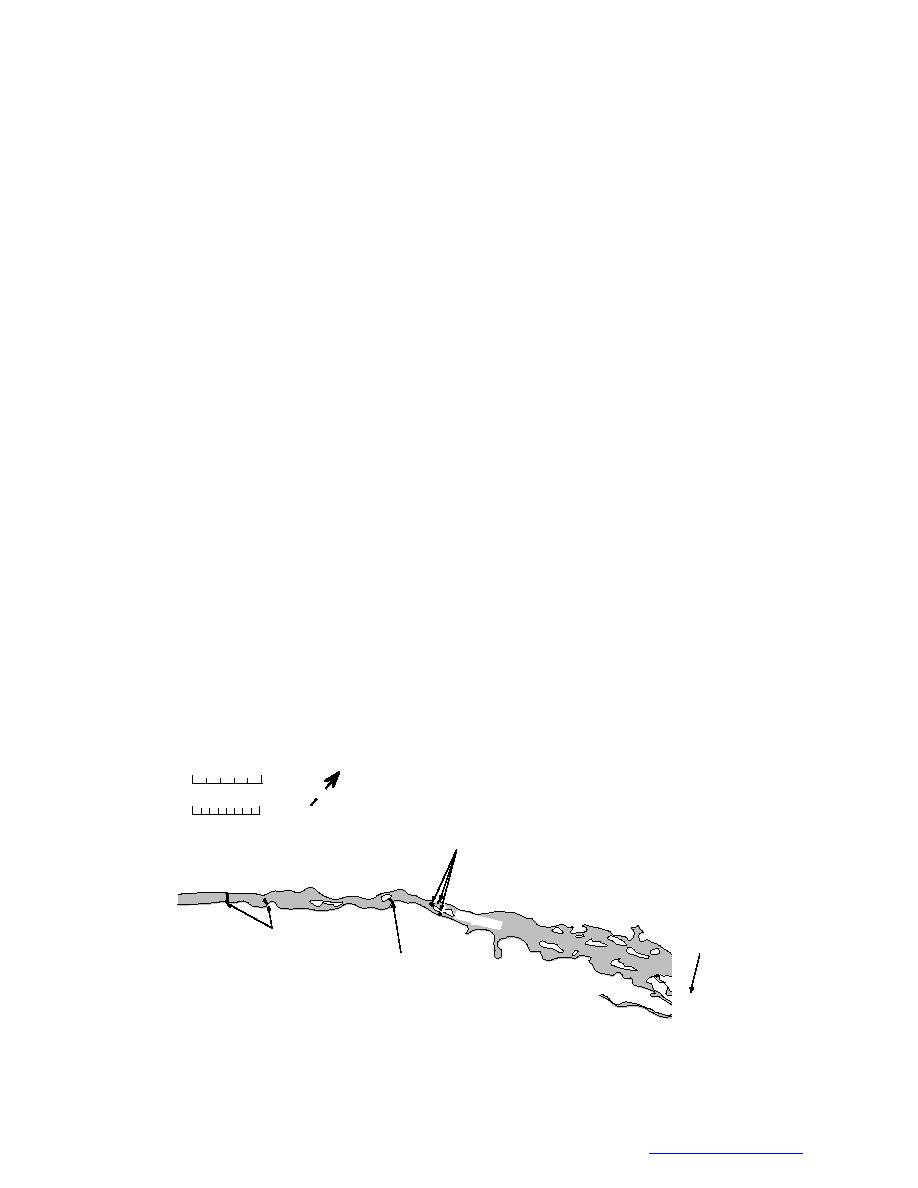
production, winter navigation, and ice jam flood
for ice cover formation may require basin-wide
control. In most cases, reaches where water vel-
coordination among hydroelectric producers
ocity exceeds about 1.5 m/s will remain open all
and water-control organizations.
winter.
Four examples illustrating important aspects of
flow control at the hydroelectric projects are listed
in Table 1. The first two are located on the St.
Flow cutbacks for ice formation
Lawrence River between Lake Ontario and
at hydroelectric projects
Major hydroelectric producers on northern
Montreal and the second two are in northern
rivers reduce flow through their power stations
Canada.
at critical times to promote ice cover growth
upstream of their intakes. The goal is to form an
St. Lawrence River: New York,
ice cover by the juxtaposition of arriving frazil
Ontario, and Quebec
pans and floes. Because the flow reduction causes
For the past three decades, hydroelectric pro-
a temporary decrease in electrical production, it
ducers on the St. Lawrence River have used flow
should be as short as possible, and take place at
control in conjunction with ice booms to promote
the optimum time for rapid ice cover formation.
rapid, early winter ice cover formation upstream
From the standpoint of winter-long hydroelectric
of the power stations at the International Section
production at a large facility, the savings result-
and on the Beauharnois Canal. The timing and
ing from flow control for ice management can be
magnitude of the flow regulation is based on
substantial.
weather forecasts, and air and water temperature,
Operators use a number of strategies to deter-
as well as the position of the edge of the ice cover
mine optimal timing and duration of flow cut-
as it progresses upstream from the dam. The over-
backs. These include monitoring air and water
all goal is to prevent ice jams and maximize win-
temperatures and weather trends. Water sur-
ter hydroelectric production. The International
face elevations (WSE) are monitored at points
Joint Commission regulates flow in the Great
upstream of generating facilities to detect the onset
Lakes and St. Lawrence River, with the overall
of ice-related head losses or hanging dams. Field
goals of maintaining water levels and preventing
observations, both from the ground and the air, are
flooding. There is no winter navigation on the St.
used to detect border ice and floating ice, and,
Lawrence upstream of the port of Montreal.
later, the spatial extent and condition of the pro-
gressing ice cover. Theoretical methods and
International Section
numerical models have also been used success-
Six booms are installed annually on the Interna-
fully to predict the timing of ice occurrence and
tional Section of the St. Lawrence, 64 km upstream
ice cover progression, giving operators some lead
of the 3200-MW Moses-Saunders Power Dam,
time to plan their flow reductions. Flow control
near Massena, New York (Fig. 2). The project is
0
5 miles
CANADA
N
0
8 km
Ice Booms
St. Lawrence River
Morrisburg
-
Galo
Ogdensburg
p Isla
nd
Waddington
Ice Booms
Iroquois
Control
Structure
Massena
UNITED STATES
Figure 2. International Section of the St. Lawrence River.
3
Go back to contents pg



 Previous Page
Previous Page
